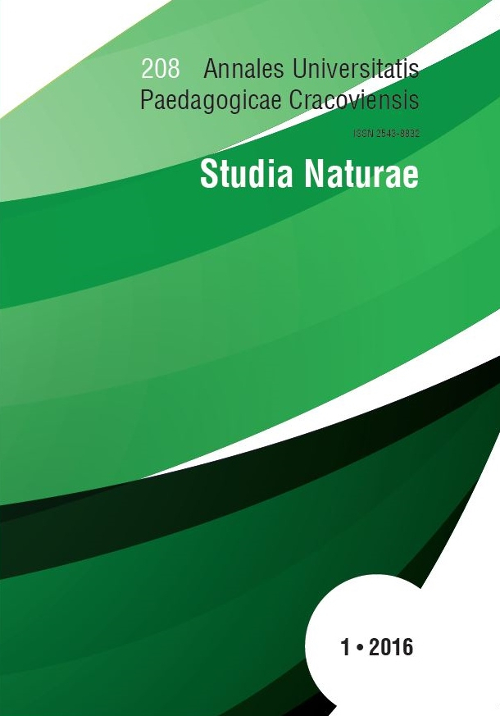Allelopathic activity of the Synechococcus sp. (Cyanobacteria, Chroococcales) on selected cyanobacteria species
Keywords:
allelopathy, cyanobacteria, fluorescence, growth, photosynthesis, photosynthetic pigmentsAbstract
Picocyanobacterium Synechococcus sp. is very important but still poorly understood component of marine and freshwater ecosystems. In this study, the effect of single and multiple addition of cell-free filtrate obtained from Synechococcus sp. on selected cyanobacteria Synechocystis sp., Geitlerinema amphibium, Nodularia spumigena and Nostoc sp. was investigated. The species present in this work are groups of aquatic phototrophs known to co-occur in the Baltic Sea. The study showed that the picocyanobacterial cell-free filtrate inhibit the growth and changed the cell morphology of filamentous cyanobacteria G. amphibium, N. spumigena and Nostoc sp. It was shown that the addition of cell-free filtrate caused a decline of pigmentation and cell lysis of G. amphibium, N. spumigena and Nostoc sp. compared to the control culture. In addition, it was observed that the filtrate obtained from Synechococcus sp. did not affect the Synechocystis sp. It was found that the filtrate obtained from picocyanobacterium had the strongest effect on growth of G. amphibium, therefore for this cyanobacteria performed additional experiments to showed whether the filtrate affected also photosynthetic pigments, chlorophyll fluorescence and photosynthesis. The study proved that the picocyanobacterial allelopathic compounds reduce the efficiency of photosynthesis, which results in the inhibition of growth of target organisms. This way of interaction may explain the formation of almost monospecific cyanobacterial blooms in many aquatic ecosystems, including in the Baltic Sea.
Downloads
Metrics
References
Bennett, A., Bogorad, L. (1973). Complementary chromatic adaptation in freshwater blue-green alga. Journal of Cell Biology, 58, 419–435.
Berry, J.P., Gantar, M., Perez, M.H., Berry, G., Noriega, F.G. (2008). Cyanobacterial toxins as allelochemicals with potential applications as algaecides, herbicides and insecticides. Marine Drugs, 6, 117–146. https://doi.org/10.3390/md6020117
Campbell, D., Hurry, V., Clarke, A.K., Gustafsson, P., Öquist, G. (1998). Chlorophyll fluorescence analysis of cyanobacterial photosynthesis and acclimation. Microbiology and Molecular Biology Reviews, 62(3), 667–683. https://doi.org/1092-2172/98/$04.0010
Hernández-Carlos, B., Gamboa-Angulo, M.M. (2011). Metabolites from freshwater aquatic microalgae and fungi as potential natural pesticides. Phytochemistry Reviews, 10(2), 261–286. https://doi.org/10.1007/s11101-010-9192-y
Gantar, M., Berry, J.P., Thomas, S., Wang, M., Perez, R., Rein, K.S. (2008). Allelopathic activity among Cyanobacteria and microalgae isolated from Florida freshwater habitats. Federation of European Microbiological Societies, 64, 55–64. https://doi.org/10.1111/j.1574-6941.2008.00439.x
Gross, E.M. (2003). Allelopathy of Aquatic Autotrophs. Critical Reviews in Plant Sciences, 22, 313–339. https://doi.org/10.1080/713610859
Gross, E.M., Wolk, C.P., Jüttner, F. (1991). Fischerellin, a new allelochemical from the freshwater cyanobacterium Fischerella muscicola. Journal of Phycology, 27, 686–692. https://doi.org/10.1111/j.0022-3646.1991.00686.x
Guillard, R.R.L. (1975). Culture of phytoplankton for feeding marine invertebrates. In: W.L. Smith, M.H. Chanley (eds.), Culture of Marine Invertebrate Animals. New York: Plenum Press, 26–60.
Issa, A.A. (1999). Antibiotic production by the cyanobacteria Oscillatoria angustissima and Calothrix parietina. Environmental Toxicology and Pharmacology, 8, 33–37. https://doi.org/10.1016/S1382-6689(99)00027-7
Jakubowska, N., Szeląg-Wasielewska, E. (2015). Toxic picoplanktonic cyanobacteria – Review. Marine drugs, 13(3), 1497–1518. https://doi.org/10.3390/md13031497
Jassby, A.D., Platt, T. (1976). Mathematical formulation of the relationship between photosynthesis and light for phytoplankton. Limnology and Oceanography, 21, 540–547. https://doi.org/10.4319/lo.1976.21.4.0540
Jeffrey, S.W., Humphrey, G.F. (1975). New spectrophotometric equations for determining chlorophylls a, b, c1 and c2 in higher plants, algae and natural phytoplankton. Biochemie und Physiologie der Pflanzen, 167, 191–194.
Latała, A, Jodłowska, S, Pniewski, F. (2006). Culture Collection of Baltic Algae (CCBA) and characteristic of some strains by factorial experiment approach. Archiv für Hydrobiologie, 165, Algological Studies, 122, 137–154. https://doi.org/10.1127/1864-1318/2006/0122-0137
Leflaive, J., Ten-Hage, L. (2007). Algal and cyanobacterial secondary metabolites in freshwaters: a comparison of Allelopathic compounds and toxins. Freshwater Biology, 52, 199–214. https://doi.org/10.1111/j.1365-2427.2006.01689.x
Legrand, C., Rengefors, K., Fistarol, G.O., Granéli, E. (2003). Allelopathy in phytoplankton – biochemical, ecological and evolutionary aspects. Phycologia, 42(4), 406–419. https://doi.org/10.2216/i0031-8884-42-4-406.1
Mazur-Marzec, H., Błaszczyk, A., Felczykowska, A., Hohlfeld, N., Kobos, J., Toruńska-Sitarz, A., Devi, P., Montalvão, S., D’souza, L., Tammela, P., Mikosik, A., Bloch, S., Nejman-Faleńczyk B., Węgrzyn, G. (2015). Baltic cyanobacteria – a source of biologically active compounds. European Journal of Phycology, 50, 343–360. https://doi.org/10.1080/09670262.2015.1062563
Schagerl, M., Unterrieder, I., Angeler, D.G. (2002). Allelopathy among Cyanoprokaryota and Other Algae Originating from Lake Neusiedlersee (Austria). International Review of Hydrobiology, 87, 365–374. https://doi.org/10.1002/1522-2632(200207)87:4<365::AID-IROH365>3.0.CO;2-B
Stal, L.J., Albertano, P., Bergman, B., Bröckel, K., Gallon, J.R., Hayes, P.K., Sivonen, K., Walsby, A.E. (2003). BASIC: Baltic Sea cyanobacteria. An investigation of the structure and dynamics of water blooms of cyanobacteria in the Baltic Sea – responses to a changing environment. Continental Shelf Research, 23, 1695–1714. https://doi.org/10.1016/j.csr.2003.06.001
Strickland, I.D.H., Parsons, T.R. (1972). A practical handbook of seawater analysis. Journal of the Fisheries Research Board of Canada, 167, 1–310.
Suikkanen, S., Fistarol, G.O., Granéli, E. (2004). Allelopathic effects of the Baltic cyanobacteria Nodularia spumigena, Aphanizomenon flos-aquae and Anabaena lemmermannii on algal monocultures. Journal of Experimental Marine Biology and Ecology, 308, 85–101. https://doi.org/10.1016/j.jembe.2004.02.012
Śliwińska-Wilczewska, S., Pniewski, F., Latała, A. (2016a). Allelopathic interactions between Synechococcus sp. and Nodularia spumigena under different light conditions. Allelopathy Journal, 37(2), 241–252.
Śliwińska-Wilczewska, S., Pniewski, F., Latała, A. (2016b). Allelopathic activity of the picocyanobacterium Synechococcus sp. under varied light, temperature and salinity conditions. International Review of Hydrobiology, 101, 1–9. https://doi.org/10.1002/iroh.201501819
Żak, A., Kosakowska, A. (2015). The influence of extracellular compounds produced by selected Baltic cyanobacteria, diatoms and dinoflagellates on growth of green algae Chlorella vulgaris. Estuarine, Coastal and Shelf Science, 167, 113–118. https://doi.org/10.1016/j.ecss.2015.07.038

